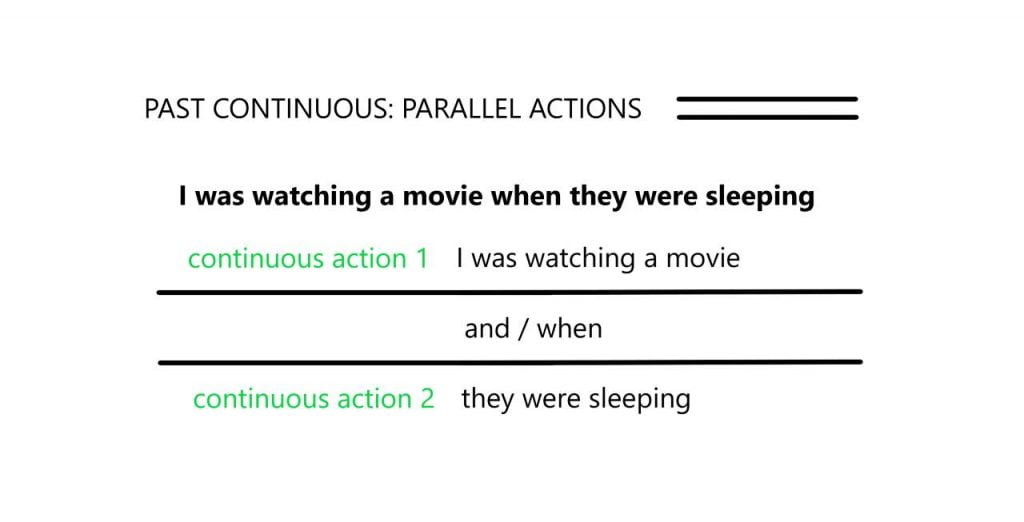Parallel actions in the Past Continuous Tense: 2 or more continuous, ongoing actions happening at the same time. We call this effect parallel actions. We use one of the parallel continuous actions as a time indicator that shows when the main continuous action was taking place.
I was watching a movie while (when) my brother was sleeping.
2 or more continuous, ongoing actions happening at the same time and in the past.

I would like to remind you of the 3 conditions when we can use Past Continuous:
1. Action was taking place in the past
2. Action was incomplete (i.e. it was continuous)
3. Indication of time the action was taking place. This time indicator is another ongoing parallel action (another incomplete action)
All parallel actions are in Past Continuous: main action and time-indicator action
So, if the first parallel action is in parallel with the second one, both the actions are parallel with each other. Inevitably, the 2 actions have the same “rights,” and we use both of them in Past Continuous. However, we have the main continuous action, and the other continuous action is a time-indicator.
I was watching a movie when / while my brother was sleeping.
I was watching – main continuous action. My brother was sleeping – time-indicator, continuous action. It shows a time period when I was watching a movie.
When / while my brother was sleeping, I was watching a movie.
I was watching a movie while my brother was sleeping.
While my brother was sleeping, I was watching a movie.
I was watching a movie, and my brother was sleeping.
As you can see, one of the actions shows when the other was happening, but both actions were happening in parallel with each other.
Interestingly, both the actions were ongoing, parallel with each other in time. They were happening in the past. The two actions were continuous, meaning incomplete, ongoing. Finally, we apply Past Continuous to all the parallel actions.
Quick recap on continuous parallel actions:
Well, very briefly, we use Past Continuous when we have ongoing parallel actions happening in the past.
I can’t wait: perpendicular actions!
Fantastic! Time of action in Past Continuous can be expressed in other ways. Besides parallel actions, we have perpendicular actions! Yes, English is a very interesting language, and we can draw so many analogies with mathematics and geometry!
Also on Past Continuous:
